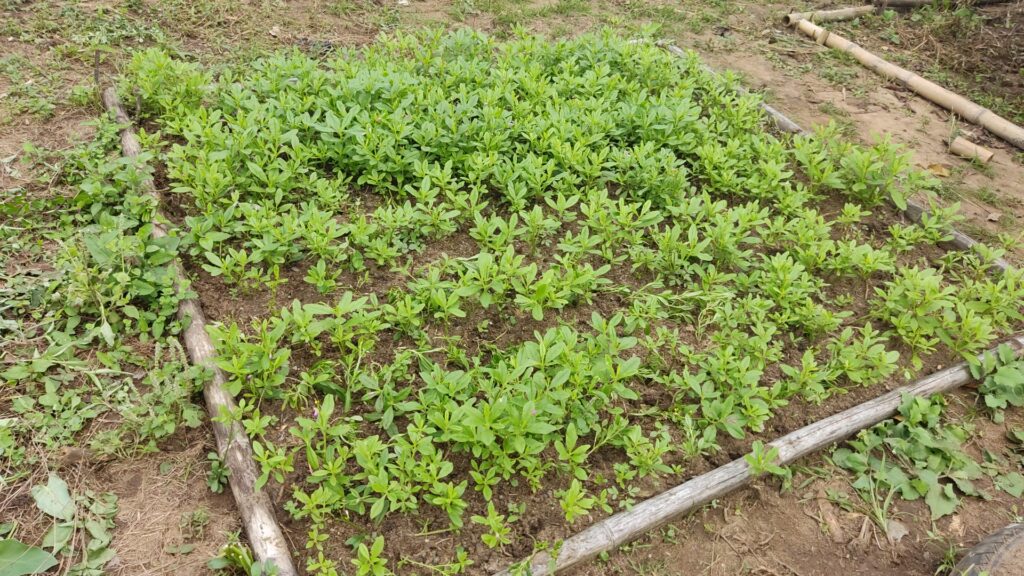Waterleaf is a herbaceous annual and perennial plant with light green edible leaves.
Like its name implies it leaves mimic the looks of a plant saturated with water especially once that grow unplanted.
It is seen in most of the states in Nigeria mainly in the south. Its botanical name is “talinum fruticosum or Talinum triangulare.”
While it goes by different local names in different regions of the world. In Nigeria, it is called ‘Gbure in Yoruba’, Mgbolodi in Igbo, Ebe-dondon in Edo and “Mmongmong Ikong” in Ibibio.
Waterleaf originated from tropical Africa, widely grown in West Africa, Asia, and South America.
Waterleaf is scientifically classified as a weed, it is extremely abundant in the rainy season, easily propagated by cuttings and by seeds.
It is quick growing and has a short life cycle, making it a highly perishable vegetable.
It has succulent stems ranging from 30 – 100cm in height. It is often harvested from the wild for local consumption and cultivated in various parts of the tropics for its edible leaves.
It is sometimes planted as an ornamental pot plant or as an edging plant in gardens.
Waterleaf is particularly grown in a large scale by farmers in some African countries not just for personal consumption but also as a means of livelihood due to the peculiar nature of its yield and profitability.
It has a short maturity duration between 2-4 weeks after planting.
Waterleaf for Cooking
The leaves of this plant and its young shoots are used in cooking when cooking fibrous vegetable soups such as Afang (Gnetum africanum), Atama (Heinsia crinata), and fluted pumpkin – Edikan Ikong (Telferia occidentalis).
It also serves as a thickening agent for sauces causing it to be consumed in large quantities in the Southern part of Nigeria.
The leaves are sometimes eaten raw in salads by some people and sometimes used in okra soup as a coloring agent.
Nutritional Composition of Waterleaf
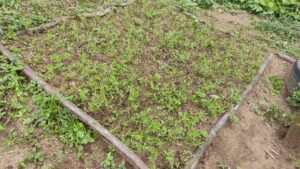
The vegetable is rich in Vitamin C, Protein, Calcium, Iron, Pectin, Vitamin A, as well as other essential nutrients and minerals.
Medicinal Properties and Uses of Waterleaf
This vegetable contains lots of water and nutrients such as minerals, vitamins, crude fiber, lipids, crude protein and others which make them nutritious and medicinal in several ways such as:
Waterleaf can delay the onset of heart diseases and stroke.
Waterleaf exhibits a whole range of biological and pharmacological activities such as anti-inflammatory, anti-fungal, and anti-bacterial properties.
It enhances cognitive ability, strong teeth and bones, digestion and weight loss
It improves Blood Cells, blood clotting, and heart health
It Promotes Eye Health, and bone health and boosts the immune system to fight infections and diseases
How to Grow Waterleaf
Waterleaf is mostly propagated by its stems. No need for a nursery, plant the stems directly in a raised bed, by putting the stems in the ground to a certain heigh but closely together.
Waterleaf require very close spacing, this helps to keep them strong and immune to disease and harsh weather conditions.
Waterleaf is frequently intercropped with other vegetables. Alternatively, it can be grown as a sole crop at a spacing of about 15 cm × 15 cm.
A close spacing also reduces competition from weeds and is possible because pressure from diseases is limited.
In fertile soils or with adequate fertilizer spacing may be increased to 25 cm × 25 cm.
Germination takes place after about 5 days and subsequent growth is very rapid if adequate water is supplied.
Animal manure such as rabbit or chicken droppings may be added to enhance rapid growth.
Plants take 40–75 days to flower from stem planting, and at flowering, they have 4–9 branches and 25–90 leaves.
The onset of flowering does not appear to affect leaf or shoot production.
Waterleaf is recorded as being self-pollinated with a limited degree of out-crossing.
Fruiting takes 75–80 days from stem planting. Under natural conditions, plants will live for 4–6 months.
Soil and Sun Requirements for Waterleaf
Water thribes well in humid conditions, with rich compost, or acidic well-drained soil, under partial shade.
But can also grow under direct sunshine and in fully exposed places, on pore sandy soils or elevations.
Waterleaf can stand the scorching sun, excessive heat, and drought. It can be easily propagated from seeds/cuttings and is ready to be harvested in less than two months.
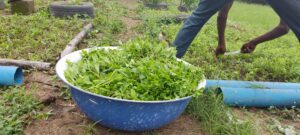
It spreads so easily from seed. It is also very sensitive to cold conditions and its roots will rot when in water-logged soil.
The site chosen should not be prone to flooding, which will damage seedlings. Add compost and animal organic manures to the soil for rapid growth.
Watering Requirements for Waterleaf
After planting, water is required daily and then three times a week after the plant has grown. It is necessary to water the leaves properly.
This will enhance the growth and yield of the water leaf. Avoid overwatering, water moderately.
Harvesting Waterleaf
It takes only 3 weeks from planting until the first harvest can take place. Thereafter, shoots can be harvested at 1–2 week intervals for a period of two months.
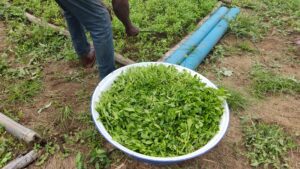
Leaf size decreases with increasing plant age and number of harvests. The first 1–3 harvests provide the best leaf quality.
On average, you can harvest 4 times from a plant before its growth starts to decline.
The best way to harvest a crop is by cutting the stem just above ground level. This allows faster regeneration than harvesting only the upper portion and side shoots.
When the first harvest is delayed and the lower parts of the stem are becoming brown and have dropped their leaves.
It is still advisable to cut just above the ground in order to obtain better quality for the next harvest.
Storage
Waterleaf is highly perishable and the shoots may start withering only a few hours after being harvested.
This is not a problem if you wish to dry the product, but it is no longer suitable as a fresh marketable vegetable.
However, when kept in a cool dry place at room temperature, or stored in a plastic bag in a refrigerator, it can last for a few days.
Pest and Disease
Waterleaf is one of the few vegetables that are hardly affected by pests or diseases.
The most common diseases are white leaf spot (Pleospora spp.) and leaf mosaic caused by an unknown virus.
A so-far unidentified blight causes dark-green spots on the underside of the leaves.
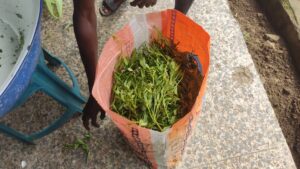
The spots later turn brown or reddish on the upper side of the leaves and eventually become black, rendering the shoots unsaleable.
There is no known treatment other than eliminating affected plants at an early stage.
Conclusion
With the above information about Waterleaf you are adequately equipped to begin your own waterleaf bed and it can be very lucrative too.
Since, it requires little resources or time investment till harvesting.
